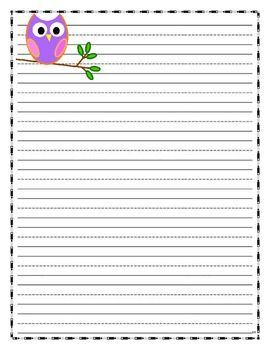





Unit
Topic: Life
Science
Grade: 3
Lesson
Topic: Living
vs. Non-Living Things
Lesson
Objectives:
-The
students will be able to distinguish between living and
non-living things and
be able to explain their reasoning. They should get at least 3
out of the 5
questions correct on the medium level of the interactive online
activity.
-The
students should be able to create their own two questions
following the same
format as the questions on the interactive game and the Forest
Life Trail
handout, and they should exchange their questions with their
peers.
Instructional
Technique:
●
Whole-class
activity and discussion
●
Independent
work
●
Partner
work
Instructional
Materials:
●
Poster
paper
●
Markers
●
Living/nonliving
Things Cards
●
Blank Index
Cards
●
Tape
●
Forest Life
Trail Handout
●
Interactive
Game: http://downloads.bbc.co.uk/bitesize/ks1/science/living_things/play/container.swf from http://interactivesites.weebly.com/science.html
●
Blank Paper
Theoretical
Perspective:
It is important for students to
learn the difference between
living and non-living things and also be aware that some
non-living things were
at one point living. Students
need to be
aware and observant of the environment around them and recognize
what was once
living, is living now, or was never living and why. This lesson is also a
way for students to
learn to classify and group things into different categories and
see the
similarities and differences between them.
Procedure:
A.
Introductory
Activity:
The teacher will call the students
up to gather on the rug and ask them what they
remember
about living things and non-living things.
The teacher will ask the class to name some examples for
a review. The
teacher will then direct their attention
to a big T-chart on a poster in front of the room. The chart has one side
labeled “Living” and
the other side labeled “Non-Living.” The
teacher will have a variety of different living and non-living
things written
on cards, and the students will be asked to volunteer to come up
and tape the
card in the correct column.
The teacher
will ask the class if they all agree, and if they agree, other
students can
continue to come up and classify the cards.
If students disagree, the class will talk about it and
come to the best
solution. After,
the teacher will ask
students what cards classified as non-living were actually
living at some
point, and they will mark these cards with a star. The teacher will then
ask for other examples
that could go into one category or the other and add them to the
chart. The chart
will be put on the wall so it can
be added to as students learn more examples of living and
non-living
things.
B.
Step-by-Step:
Students will each receive a
handout titled “Forest Life
Trail” and follow the step by step instructions to get to the
interactive
website. They will then complete the “medium” level of the game.
While
answering the questions on the game, students will record their
answers and
reasonings on the handout. They will record their first choice
and why, along
with whether or not they were right.
They will also write in the correct answer if needed and
how many tries
it took them to get the correct answer.
If students finish all five steps plus the bonus question
early on the
website, they can then go on to the more difficult levels while
other students
finish their handout. Students who go on to the more difficult
levels will not
have to record their answers. After every student has finished
the medium level
of the interactive game, the teacher will tell the class to
start writing their
own questions on a separate piece of paper.
Students will write out two of their own questions that
are similar to
the ones they completed in the interactive game, but that
include three options
of their choice. The
instructions are on
the bottom of the “Forest Life Trail” handout.
After students have come up with their own two questions,
they will swap
them with a partner and try to answer each other’s questions. When finished
answering each other’s
questions, they will discuss their reasoning with their partner.
C.
Closure:
After they have answered each
other’s questions and
discussed them with their partners, the students will all gather
at the rug
again. They can
raise their hands and
wait for the teacher to call on volunteers to come up and add to
the chart they
started at the beginning of class. They will write things on
blank cards and
tape them to the chart. Students
will
engage in a whole class discussion about what they learned, what
surprised
them, and what they liked about the lesson. As an exit slip,
students will each
independently write down something they learned that surprised
them while
completing this lesson and why.
The
teacher will put these papers on a bulletin board so everyone
can see them the
next day.
D.
Adaptations
for Different Learners:
This lesson is designed to
accommodate students who tend to finish their work earlier than
others. If some
students have finished the medium level that they are required
to complete for
the “Forest Life Trail” handout, they can move on to the more
challenging
levels. All students will finish their work at a different pace,
so these extra
levels are a way to make sure that all students will have
something to do. For
any potential non-native speakers or struggling
readers, the interactive game has images that will help them use
context clues
if they are having difficulty reading the question.
E.
Homework:
Students will receive a homework
sheet in which they will label and draw a picture of two things
that can be
found in the forest or in their backyard that are alive, two
things that have
never been alive, and two things that are not alive now but were
once
alive. The objects
the students draw can
be from the online game, or they can think of them on their own.
Evaluation:
A.
The first
objective is:
-The
students will be able to distinguish between living and
non-living things and
be able to explain their reasoning. They should get at least 3
out of the 5
questions correct on the medium level of the interactive online
activity.
The
teacher will document successful completion of this objective by
collecting the
handouts, reading through them, and taking note of the
reasonings of each
student. If the students get at least 3 out of 5 of the
questions correct with
appropriate explanations, the teacher will know that they have a
good
understanding of the material.
The second objective is:
-The
students should be able to create their own two questions
following the same
format as the questions on the interactive game and the “Forest
Life Trail”
handout, and they should exchange their questions with their
peers.
The
teacher will document successful completion of this objective by
circulating
the room and listening to students exchanging and discussing
each other’s
questions. The teacher will also have a few students volunteer
to share what
they came up with and why to the entire class.
B.
Some
concerns about teaching this
lesson are that we worry the internet will not be working, which
will
drastically affect the teacher’s ability to carry out the entire
lesson. A
backup idea for this lesson could be making a work packet that
is similar to
the interactive game and asks the students similar questions
with images to go
along with the questions. Students could work together and
compare and discuss
their answers.
Name:_______________________________
Date:________________
Forest Life Trail
For
the past few weeks, we
have been learning about living things and non-living things in
different
environments. We have even learned that some non-living
things were
actually living at one point. Since we have recently
talked about forest
animals and other objects in the forest, you will be exploring a
trail in the
forest as an explorer. As you walk through the trail,
choose which
objects are alive and which are not based on what the directions
ask you.
Have fun and good luck.
A.
Go
to http://interactivesites.weebly.com/science.html
B.
Select
“Living Things”
C.
Click
on the activity in
the bottom right corner of the website that says, “Which one of
these objects
is alive?”
D.
Select
“Medium” and then
click “Play”
E.
Follow
the directions at
each stop along the trail.
Step 1:
Which object is alive
and why? Your 1st choice:
_______________________________ because
______________________________________________________________________.
Were you
correct? YES
NO-
answer:________________
How many tries did it take you? _____
Step 2:
Which object has never
been alive and why? Your 1st choice: ____________________
because
______________________________________________________________________.
Were you
correct? YES
NO-
answer:_________________
How many tries did it take you? _____
Step 3:
Which object has never
been alive and why? Your 1st choice: ____________________
because
______________________________________________________________________.
Were you
correct? YES
NO-
answer:_________________
How many tries did it take you? _____
Step- Bonus:
What did you learn from the bonus question? Did you get it
correct on your
first try?
_________________________________________________________________________________________________________________________________________________________________________________________________________________________________________.
Step 4:
Which object has never
been alive and why? Your 1st choice: ____________________
because
_____________________________________________________________________.
Were you
correct? YES
NO-
answer:_________________
How many tries did it take you? _____
Step 5:
Which object has never
been alive and why? Your 1st choice: ____________________
because
_____________________________________________________________________.
Were you
correct? YES
NO-
answer:_________________
How many tries did it take you? _____
Now come up with your
own two questions that
follow the same format as the ones you have already answered on
the medium
level. Give three possible answers for another student to
choose from.
Write these questions on a separate sheet of paper.
~~~~~~~~~~~~~~~~~~~~~~~~~~~~~~~~~~~~~~~~~~~~~~~~~~~~~~~~~~~~~~~~~~~~~~~~~~~~~~~~~~~~~~~~~~~~~~~~~~~~~~~~~~~~~~~~~~~~~~~~~~~~~~~~~~~~~~~~~~~~~~~~~~~~~~~~~~~~~~~~~~~~~~~~~~~~~~~~~~~~~~~~~~~~~~~~~~~~~~~~
Name:
________________________________
Date:___________________
HOMEWORK
Label and draw a
picture of two things that can
be found in the forest or in your backyard that are alive, two
things that have
never been alive, and two things that are not alive now but were
once alive.
The objects you draw can be from the online game, or you
can think of
them on your own.
|
ALIVE |
NEVER BEEN ALIVE |
ONCE ALIVE |
|
|
|
|
|
|
|
|